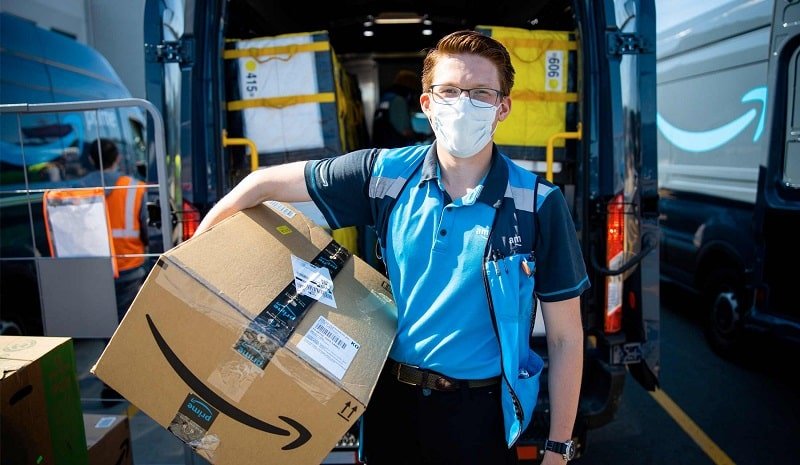The Road to Efficiency: Strategies for Delivery and Logistics

Efficiency is the heartbeat of the delivery and logistics industry. For businesses that rely on timely deliveries, optimizing operations can mean the difference between satisfied customers and costly delays. Here are a few key strategies for improving delivery and logistics efficiency, including how to handle challenging conditions.
Streamlined Route Planning
Efficient route planning is the foundation of a well-oiled delivery and logistics operation. By utilizing advanced route optimization software, businesses can plan the most time-efficient routes, minimizing unnecessary detours and reducing fuel consumption. This not only saves time but also cuts down on operational costs.
Effective Inventory Management
Another critical aspect of delivery and logistics efficiency is inventory management. Ensuring that products are readily available and in the right quantities prevents unnecessary delays caused by stockouts or overstocking. Real-time inventory tracking systems help businesses maintain accurate stock levels, improving order fulfillment and customer satisfaction.
Vehicle Maintenance and Inspection
To maintain a reliable fleet, regular vehicle maintenance and inspection are non-negotiable. Well-maintained vehicles are less likely to break down, reducing downtime and costly delays. Checking for issues such as tire wear, engine health, and brakes can prevent accidents and ensure driver safety, especially when driving in inclement weather.
Driver Training and Safety Protocols
Drivers are the frontline heroes of the delivery and logistics industry. Properly trained drivers who adhere to safety protocols are more likely to handle challenging conditions efficiently and safely. One such condition is driving in fog, which can severely limit visibility. Ensuring drivers are trained to navigate fog safely, with the appropriate use of fog lights and hazard signals, is essential.
Advanced Vehicle Technology
Today’s delivery and logistics industry benefit from advanced vehicle technology. Vehicles equipped with GPS tracking, real-time traffic updates, and driver behavior monitoring systems allow businesses to stay informed and make necessary adjustments on the fly. These technologies improve route optimization and enable quicker responses to changing conditions, such as weather and traffic.
Communication and Customer Engagement
Efficient communication is vital in the delivery and logistics industry. Keeping customers informed about the status of their deliveries, including potential delays due to factors like weather or traffic, is essential for building trust and managing expectations. Transparency and proactive communication can turn potentially negative situations into opportunities to demonstrate your commitment to customer satisfaction.
Data-Driven Decision-Making
Efficiency in delivery and logistics is further enhanced through data-driven decision-making. The digital age has granted businesses access to a wealth of data that can be harnessed for strategic insights. By analyzing data on customer preferences, delivery times, and routes, businesses can fine-tune their operations. This approach allows for more accurate demand forecasting, optimized inventory management, and improved customer experiences. In the dynamic world of delivery and logistics, being able to make informed decisions based on real-time data is a game-changer.
Adaptability and Innovation
Efficiency is not a static goal; it requires ongoing adaptation and innovation. The delivery and logistics industry is no exception. Staying ahead of the competition means continuously exploring innovative solutions. This could include leveraging the latest vehicle technologies, such as electric or autonomous vehicles, to improve efficiency and reduce operating costs. Additionally, adopting creative strategies for last-mile delivery and warehouse automation can lead to substantial efficiency gains. By embracing innovation, businesses can remain agile and adapt to the ever-evolving landscape of delivery and logistics.
Sustainable Practices
Sustainability is becoming an increasingly important consideration in the delivery and logistics sector. Implementing eco-friendly practices not only reduces your carbon footprint but can also lead to cost savings. Consider adopting fuel-efficient vehicles, optimizing routes to reduce emissions, and exploring alternative energy sources such as electric or hybrid vehicles.
Efficiency in delivery and logistics is the key to staying competitive and meeting customer expectations. By implementing streamlined route planning, effective inventory management, routine vehicle maintenance, driver training, and the use of advanced technology, businesses can improve their operational efficiency and reduce the impact of some challenges.
While efficiency strategies may vary from one business to another, the overarching goal remains the same: to deliver products on time, every time. By focusing on these key areas, businesses can enhance their delivery and logistics operations, build stronger customer relationships, and drive success in a rapidly evolving industry.










